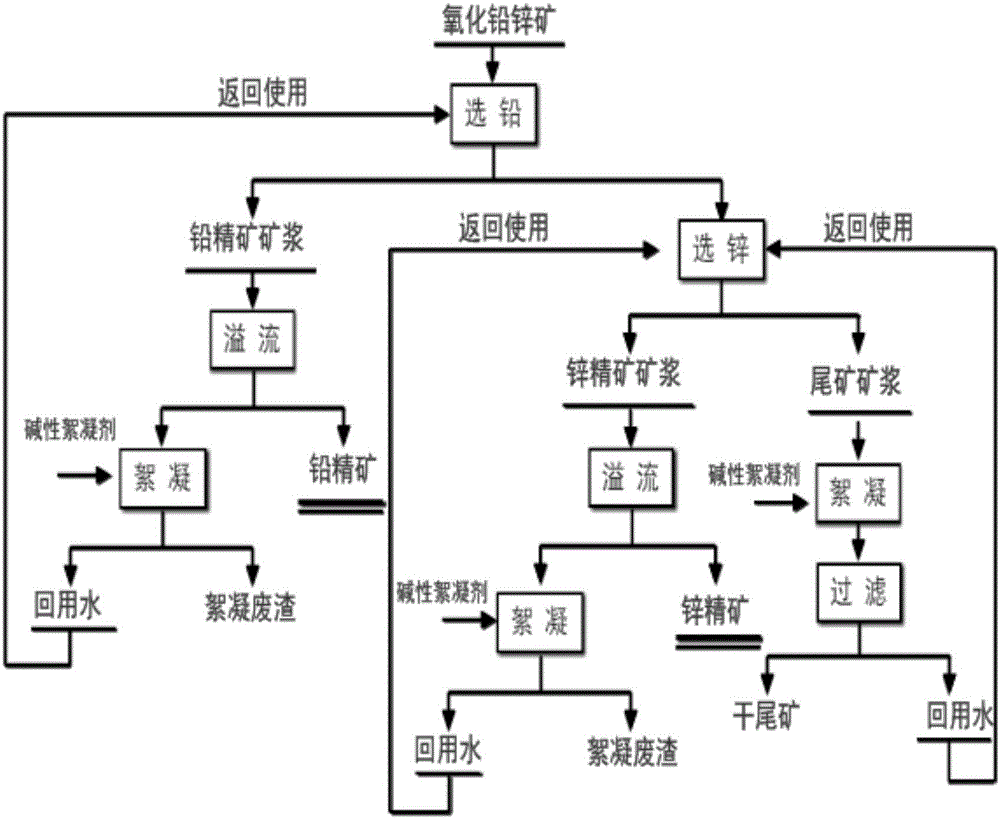Method for reusing beneficiation wastewater of lead-zinc oxide ore
A technology of lead-zinc oxide and mineral processing wastewater, which is applied in mining wastewater treatment, chemical instruments and methods, multi-stage water treatment, etc., can solve the problems of high treatment cost, pollution, secondary pollution, etc., and achieve broad application prospects and technological processes Short, steady effect
- Summary
- Abstract
- Description
- Claims
- Application Information
AI Technical Summary
Problems solved by technology
Method used
Image
Examples
Embodiment Construction
[0015] In order to make the object, technical solution and advantages of the present invention clearer, the present invention will be further described in detail below in conjunction with the accompanying drawings and embodiments. It should be understood that the specific embodiments described here are only used to explain the present invention, not to limit the present invention.
[0016] Embodiment 1 of the present invention, such as figure 1 Shown, a kind of method of lead-zinc oxide mineral processing waste water reuse, comprising:
[0017] (1) Conduct lead separation on lead-zinc oxide ore; introduce the lead concentrate slurry obtained by lead separation into the lead concentrate pool, the slope of the lead concentrate pool is 2°, and the outlet at the lower end of the lead concentrate pool is made into a door shape with woven bags and wooden boards Retain lead concentrate, the waste water in the lead concentrate pool flows out from top to bottom through the woven bag w...
PUM
 Login to View More
Login to View More Abstract
Description
Claims
Application Information
 Login to View More
Login to View More - R&D
- Intellectual Property
- Life Sciences
- Materials
- Tech Scout
- Unparalleled Data Quality
- Higher Quality Content
- 60% Fewer Hallucinations
Browse by: Latest US Patents, China's latest patents, Technical Efficacy Thesaurus, Application Domain, Technology Topic, Popular Technical Reports.
© 2025 PatSnap. All rights reserved.Legal|Privacy policy|Modern Slavery Act Transparency Statement|Sitemap|About US| Contact US: help@patsnap.com

